Balsa wood is a lightweight yet strong material that is often used in model making and other crafts. When working with balsa wood, it is sometimes necessary to drill holes to insert screws or other fasteners. While this may seem daunting, it is quite easy to do with the right tools and techniques. In this blog post, You will learn in detail how to drill holes in balsa wood.
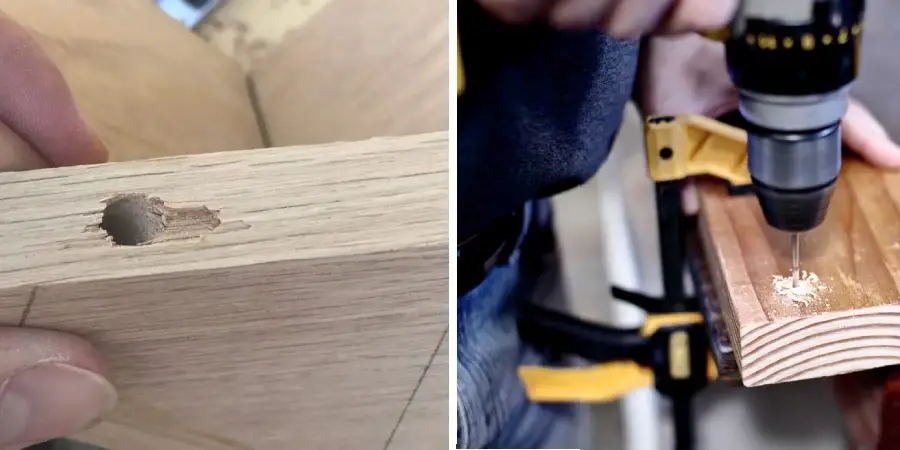
Materials You Need
- 1/8″ or 3/32″ drill bit
- 1/4″ or larger drill bit (optional)
- Balsa wood
- Pencil
- Ruler or measuring tape
- Sandpaper (optional)
Step-by-Step Processes for How to Drill Holes in Balsa Wood
Step 1: Choose the Right Type of Drill Bit
The first step to drilling holes in balsa wood is choosing the right drill bit. For most applications, a standard twist drill bit will work just fine. However, if you’re doing a lot of drilling or need to make very large holes, you may want to consider using a spade bit or hole saw.
Step 2: Mark the Center of the Hole
Once you’ve selected the appropriate drill bit, it’s time to mark the center of the hole. This can be done with a pencil or marker. Making a small pilot hole at the center of the mark is also a good idea if you’re using a power drill. This will help to prevent the drill bit from wandering off course.
Step 3: Place the Drill Bit in the Drill
With the center of the hole marked, it’s time to place the drill bit in the drill. If you’re using a power drill, ensure the drill bit is securely chucked in place.
Step 4: Position the Balsa Wood
Once the drill bit is in place, it’s time to position the balsa wood. If you’re using a hand drill, you can simply hold the piece of wood in one hand and position it over the center of the hole. If you’re using a power drill, it’s best to clamp the piece of wood down before proceeding.
You Can Check It Out to Stop Wooden Slats Falling Out
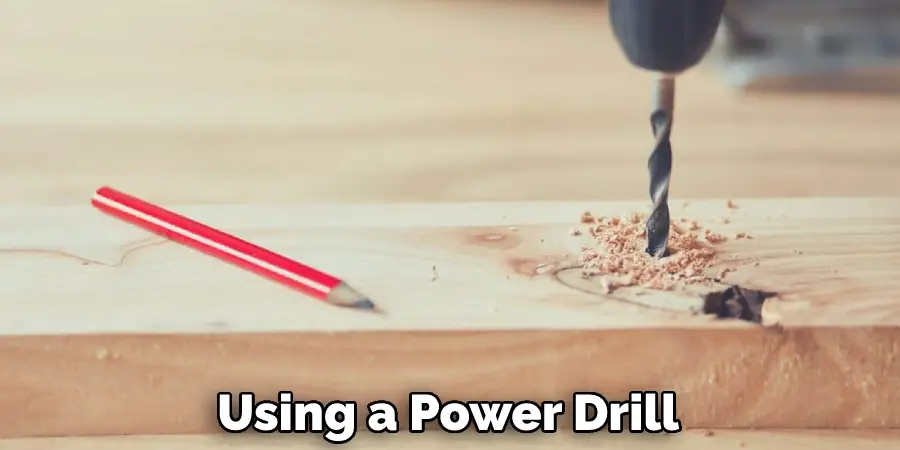
Step 5: Begin Drilling
With the balsa wood positioned, you can now begin drilling. If you’re using a hand drill, simply apply pressure to the drill bit and start slowly turning it clockwise. If you’re using a power drill, start the drill on a low setting and then increase the speed as needed.
Step 6: Drill Through the Balsa Wood
Continue drilling until the drill bit breaks through the other side of the balsa wood. If you’re using a hand drill, you may need to apply a little more pressure than usual to get through the wood.
Step 7: Remove the Drill Bit
Once you’ve broken through the other side of the balsa wood, it’s time to remove the drill bit. If you’re using a power drill, simply release the trigger and allow the drill bit to stop spinning. If you’re using a hand drill, you can unscrew the drill bit from the chuck.
Step 8: Remove the Debris
With the drill bit removed, it’s time to remove any debris that may have been generated during the drilling process. This can be done with a brush or vacuum cleaner.
Step 9: Inspect the Hole
Once the debris has been removed, you can now inspect the hole. If everything looks good, then you’re ready to move on to the next step. However, if the hole is too large or irregular, you may need to start over from Step 4.
If you need to make additional holes, simply repeat the steps above. When you’re finished, you’ll have a clean, precise hole in your balsa wood.
You Can Check It Out to Smooth Wood Without Sandpaper
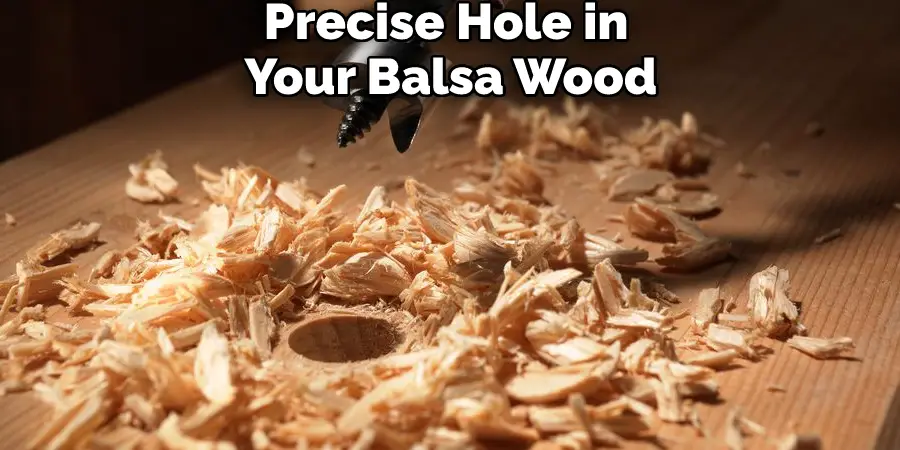
Safety Tips for How to Drill Holes in Balsa Wood
- Always wear safety goggles when working with power tools.
- Make sure the drill bit you are using is the correct size for the job. Using a bit that is too large can cause the wood to split.
- Drill slowly and evenly, letting the drill do the work. Do not force it.
- Use a sharp drill bit for the best results.
- If the wood begins to smoke, stop drilling and let the wood cool before continuing.
- Periodically check the condition of the drill bit, and replace it if it is getting dull or damaged.
- When drilling through hardwood, use a lubricant such as a beeswax or soap to help the drill bit move smoothly.
- If the wood is very thick, drill from both sides to avoid splitting it.
- Use a clamp or other type of support to hold the wood in place while you are drilling.
- Always unplug the drill when you are not using it, and store it safely out of reach of children.
These tips will help you safely and successfully drill holes in balsa wood safely and successfully.
Why Wood Keep Splitting When Drilling?
Balsa wood is a very soft and light wood that is often used in model making, crafts, and other woodworking projects. It is easy to work with and can be cut, drilled, and shaped relatively easily. However, balsa wood is also very fragile and prone to splitting and breaking. One of the most common problems when working with balsa wood is that it splits and breaks easily when drilling holes. This can be extremely frustrating, especially if you’re trying to drill a precise hole.
There are a few different things that you can do to prevent your balsa wood from splitting when drilling holes. First, make sure that you are using a sharp drill bit. A dull drill bit will cause the balsa wood to split more easily. Second, try drilling your holes slightly smaller than you need them to be. This will help to prevent the wood from splitting. Finally, try using a brad point drill bit. These drill bits have a sharp point that helps prevent the wood from splitting.
With a little bit of care and attention, you can drill holes in balsa wood without causing it to split or break.
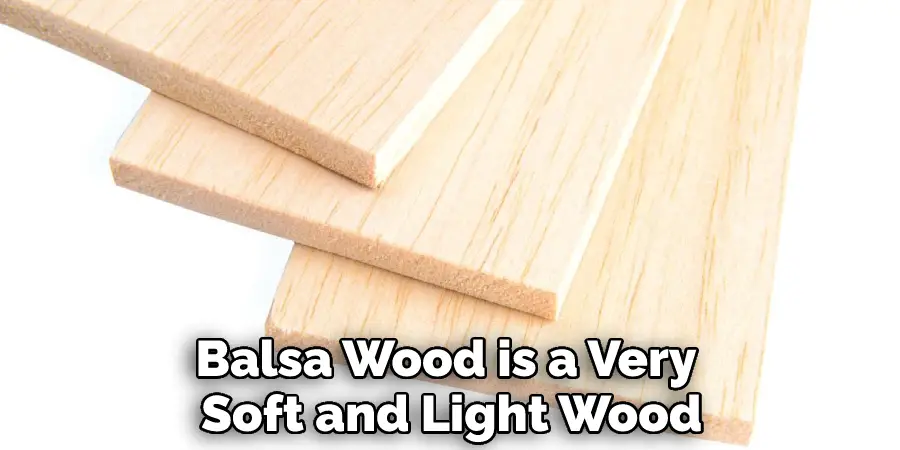
How Can You Avoid Tearing the Wood When Drilling Holes?
When drilling holes in balsa wood, it is important to take care not to tear the wood. One way to avoid this is to use a sharp drill bit and drill slowly. It can also help to clamp the piece of balsa wood you are drilling into so that it does not move around while you are working. Finally, be sure to drill perpendicular to the grain of the wood. If you follow these tips, you should be able to drill holes in balsa wood without any problems.
Why Do You Use a Forstner Drill Bit?
Forstner drill bits are ideal for drilling clean, precise holes in balsa wood. The main advantage of using a Forstner bit is that it will not “wander” or “skate” across the surface of the wood like a standard twist drill bit can. This is because the cutting edges of a Forstner bit are perpendicular to its body rather than at an angle like a twist drill bit. This design feature prevents the bit from “walking” across the surface of the wood and results in a much cleaner, more precise hole.
Another advantage of Forstner bits is that they can be used to drill overlapping holes. This means that you can start drilling a hole from one side of a piece of balsa wood, flip the wood over, and drill from the other side. This results in a perfectly centered hole in the wood’s thickness.
Forstner bits are available in a wide range of sizes, so you can choose the bit that is best suited for your project. For example, if you are drilling a hole for a dowel or other small hardware, you will want to use a smaller bit. Conversely, if you are drilling a large hole for a recessed light fixture, you will need to use a larger bit.
Is It Necessary to Call Any Professional to Drill Holes in Balsa Wood?
Balsa wood is a very versatile material that can be used for various projects. It is relatively soft and lightweight, making it easy to work with. Balsa wood is also quite strong, making it ideal for many different applications. One popular use for balsa wood is model making.
Model makers often need to drill holes in balsa wood to insert small pieces of hardware, such as screws or nails. While it is possible to drill holes in balsa wood without any professional help, it is generally not recommended. Balsa wood is quite delicate and can be easily damaged if not handled properly.
If you plan to drill holes in balsa wood, it is best to call a professional. A professional will have the necessary tools and experience to drill holes in balsa wood quickly and easily. They will also be able to advise you on the best way to drill holes in balsa wood based on the specific project you are working on.
Calling a professional may cost you a bit of money, but it is generally worth ensuring that your project turns out the way you want it to.
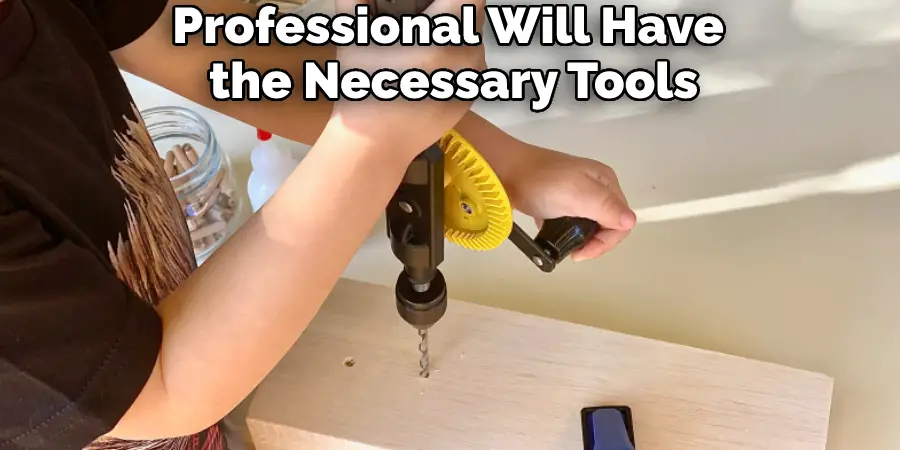
Conclusion
Balsa wood is a type of wood that is often used in model making and other projects that require light, sturdy wood. To drill a hole in balsa wood, use a sharp knife to make a small incision at the point where you want to drill the hole. Then, using a sharp drill bit, carefully twist the bit into the wood until it has penetrated through to the other side.
Finally, use a saw or file to smooth off any rough edges around the hole. With a little practice, you’ll be able to easily drill holes in balsa wood without damaging the wood. With the proper equipment and some care, you can easily drill precise holes into balsa wood without any problem. With a few simple tips, you can benefit from learning how to drill holes in balsa wood.

